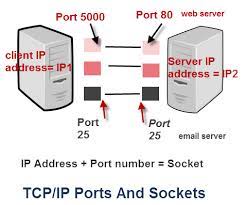Home windows Firewall software enables you to limit outbound/inbound network traffic for a particular application or TCP/IP port. It’s a prominent implies of limiting network accessibility to/from individual workstations or web servers. Home windows Firewall software guidelines could be set up separately on each computer system. Or, if your computer system remains in a Home windows domain name, the manager could handle the setups and guidelines of Home windows Firewall software utilizing team plans.
In big companies, port filtering system guidelines are typically given the degree of a router, L3 buttons, or devoted firewall softwares. Nevertheless, absolutely nothing avoids you from spreading out your Home windows Firewall software network accessibility restriction guidelines to Home windows workstations or web servers.
How to Configure Windows Firewall Settings
You could set up Home windows Firewall software setups (obstruct or open up port in Home windows 10/8/7) inning accordance with your requirements and bring back the default setups if needed. To do this, just browse to the Progressed Setups of the firewall software. Begin by opening the control board and inputting ‘Firewall’ right into the browse box kind. After that, open up Firewall software and click the ‘Advanced Settings‘ web link.
How to Block or Open a Port in Windows 10/8/7 Firewall
- 1. Open Windows Firewall and find the Advanced Settings.
To open Windows Firewall, type ‘firewall.cpl’ into the search bar and press the Enter key.
When ‘Advanced Settings’ opens, click the Advanced Settings link in the left-hand pane of the main firewall dialog box. This will bring up the ‘Windows Firewall with Advanced Security’ window.

- 2. Open the List of Inbound Rules.
On the left-hand pane of the window, click on ‘Inbound Rules’ to bring up the list of rules.

- 3. Set up a New Rule.
From the Actions pane on the right-hand side, select ‘New Rule…’

- 4. Open the New Inbound Rule Wizard.
Select ‘Port’ and then click ‘Next.’ This will open the ‘New Inbound Rule Wizard’ window.
From there, select ‘Port’ as the new Rule Type and click ‘Next.’
Click on ‘Specific local ports.’ Then choose a port number (e.g., 80).
Click ‘Next’ to continue.

- 5. Block the Connection.
In the Action window, select ‘Block the connection’ and click ‘Next.’ - 6. Apply Your New Rule to Each Profile Type.
In the Profile window, tick the boxes to apply your rule to each of the three profile types: Domain, Private, and Public. Click ‘Next’ to continue. - 7. Name Your Rule and Configure the Settings.
Choose a name for your new rule, e.g., ‘block suspicious ports.’
If you want, you can also add an optional description to your rule.
When you’re done, click ‘Finish’ to configure the settings.

You may want to open a port in the Windows Firewall in order to let a specific IP address communicate with your computer (e.g., when you’re playing games). The procedure to open a port remains more or less the same. All you need to do is follow the instructions in the New Inbound Rule wizard, specify the Port, and select ‘Allow the connection.’
How to Turn off TCP/IP Port in Windows Firewall with Action1
Follow the steps below to turn off the TCP/IP Port in Windows Firewall:
1. Log in to the Action1 dashboard.
2. In the menu on the left-hand side, select ‘Managed Endpoints.’

3. Mark the endpoint for the port you want to block.
4. Click the ‘More Actions’ button and then select the Run Command option.

5. In the window that opens, enter the command netsh advfirewall firewall add rule name=”BlockAIM” protocol=TCP dir=out remoteport=4099 action=block. (In this case, we’re blocking port 4099).

6. Click ‘Next Step.’
7. Click ‘Add Endpoints’ and then select the endpoints to which you will apply this blocking rule.

8. Click ‘Next Step’ and schedule the execution time of your command.

9. Click ‘Finish.’

